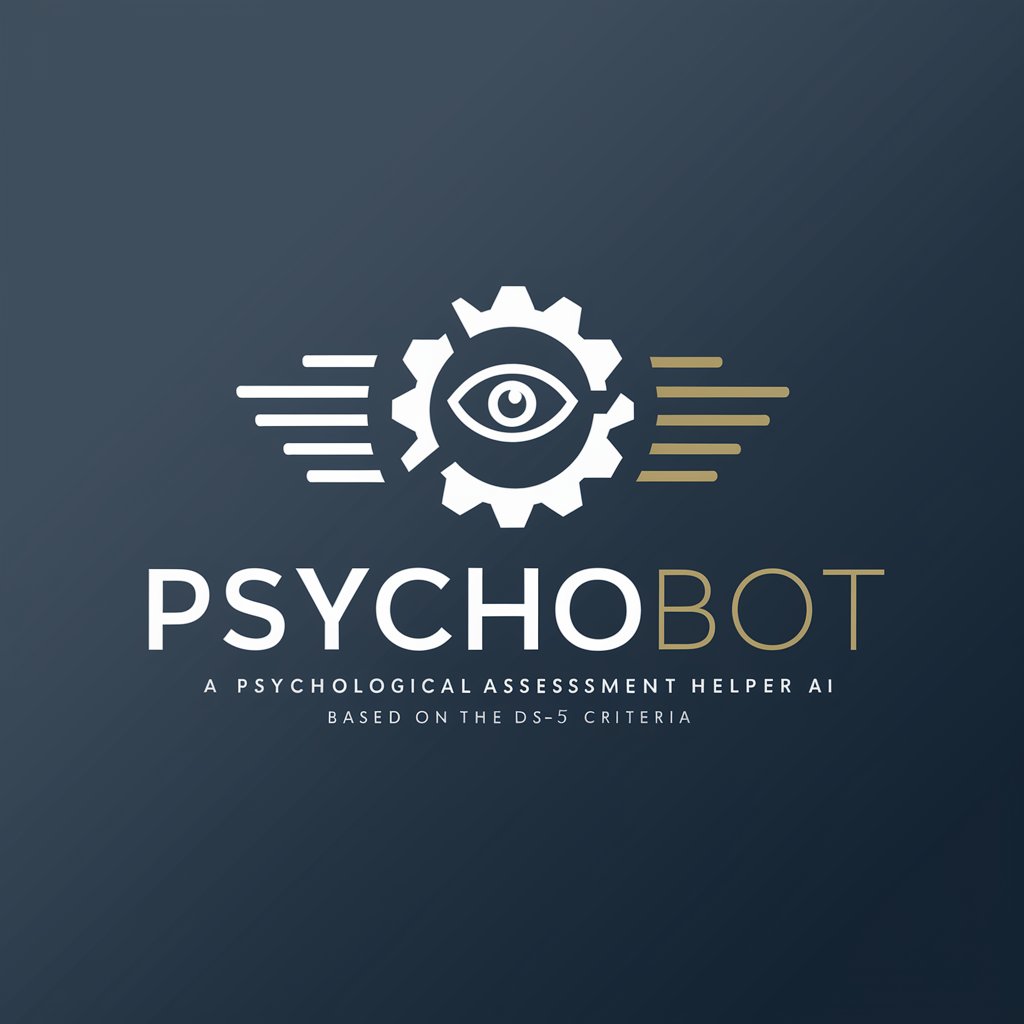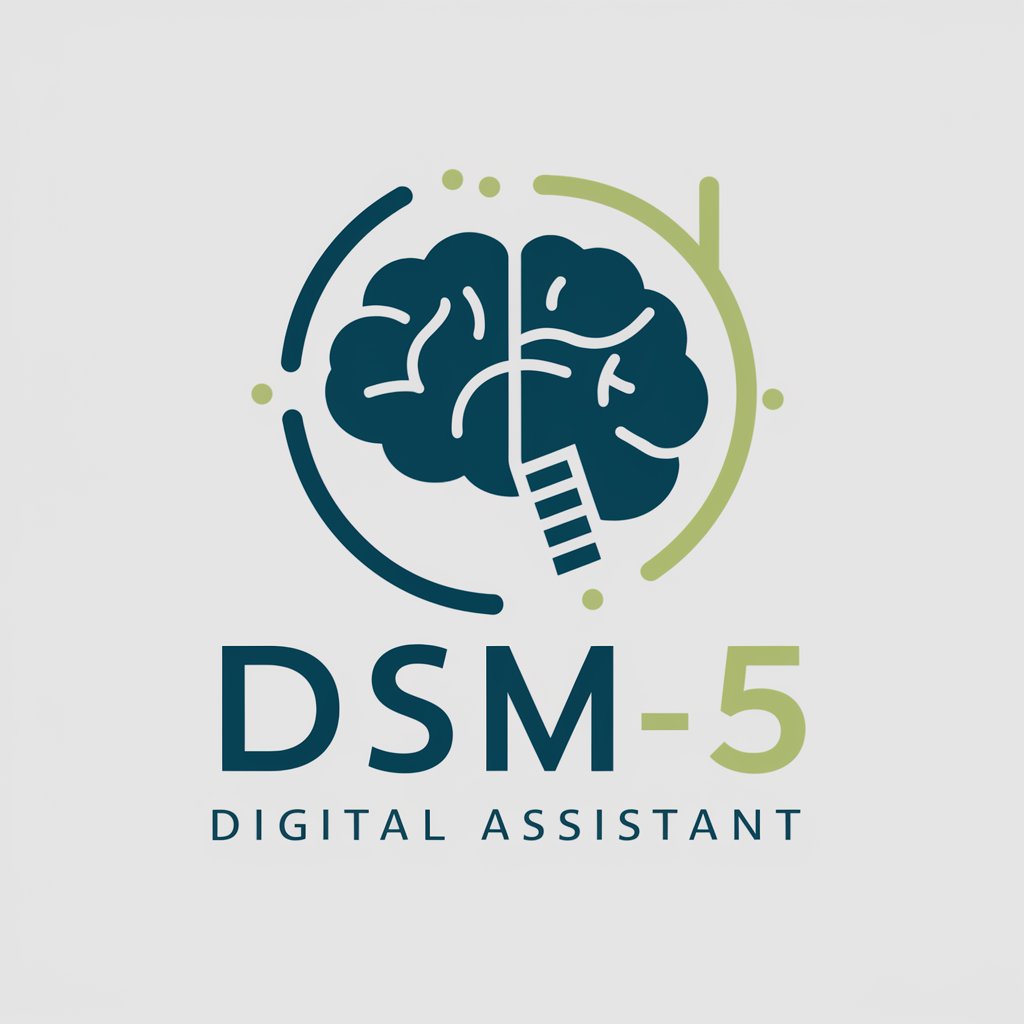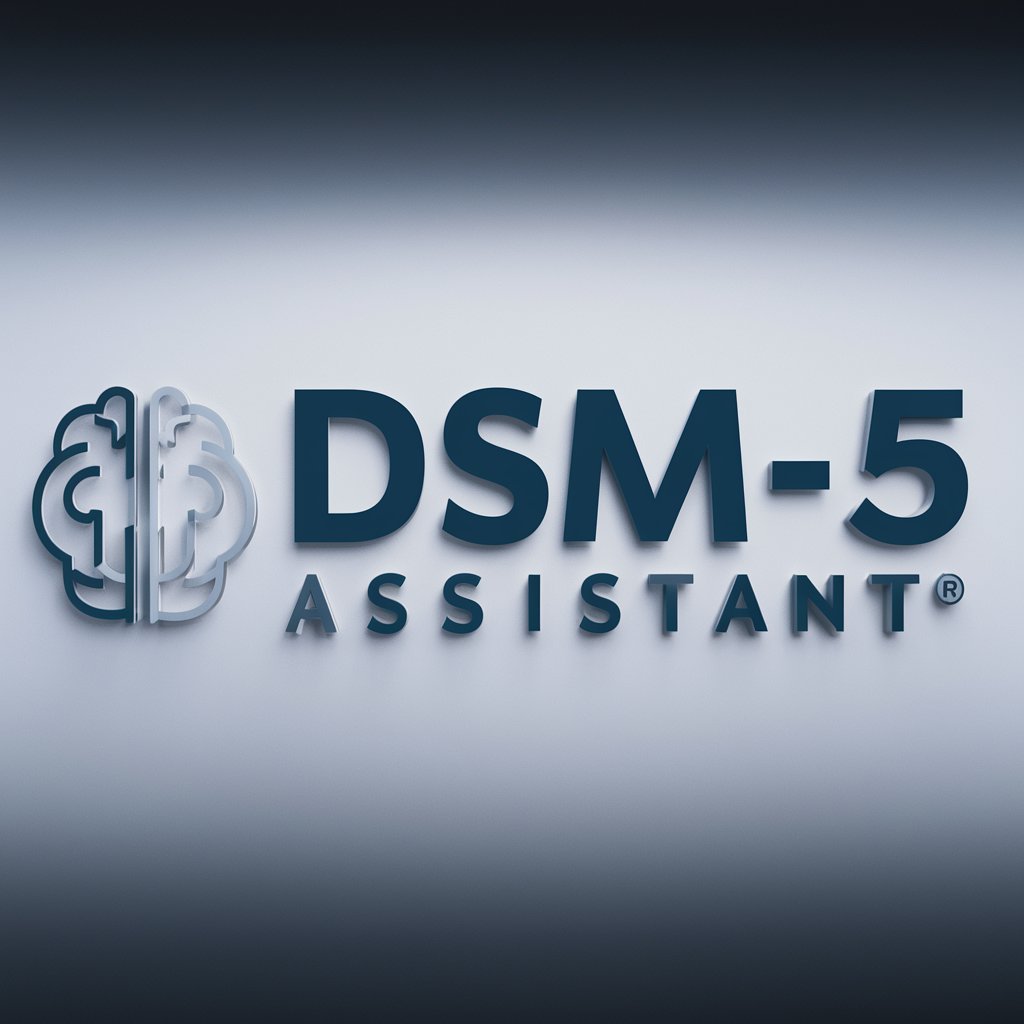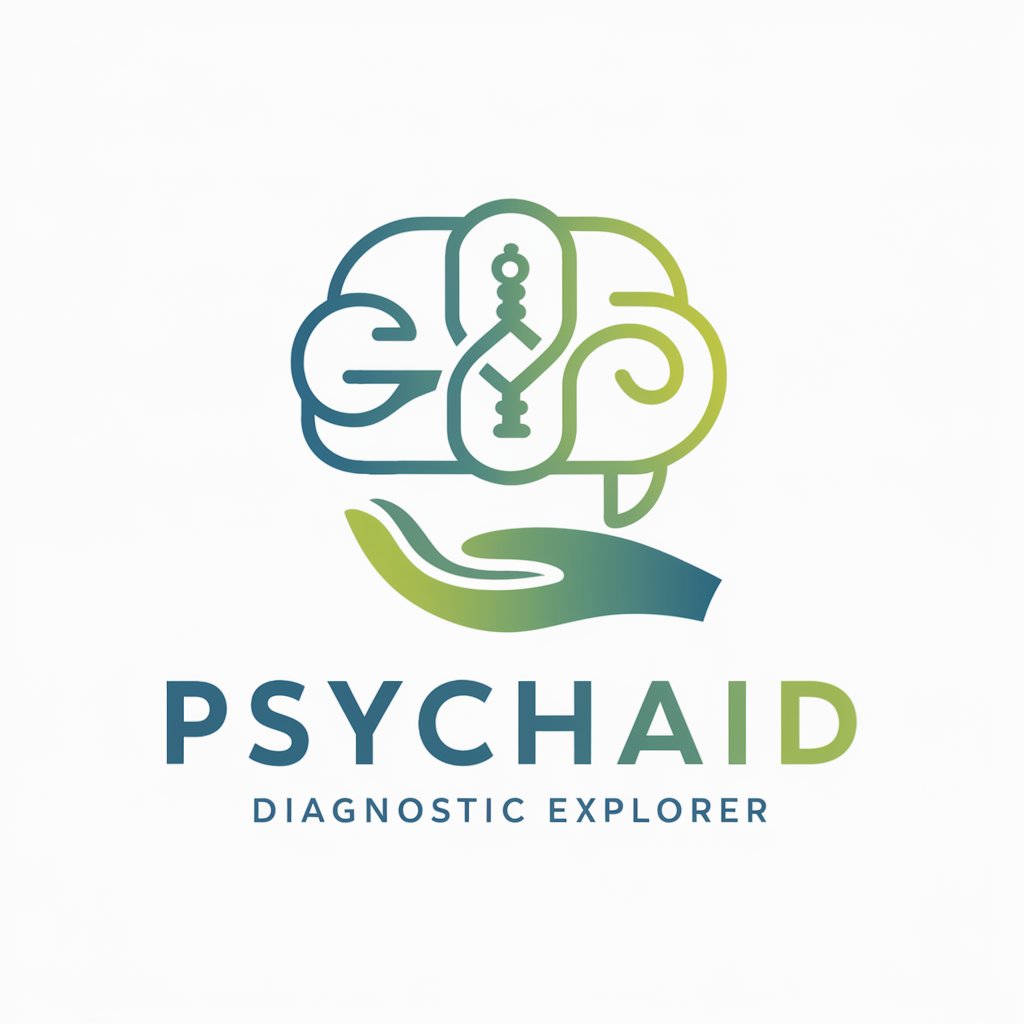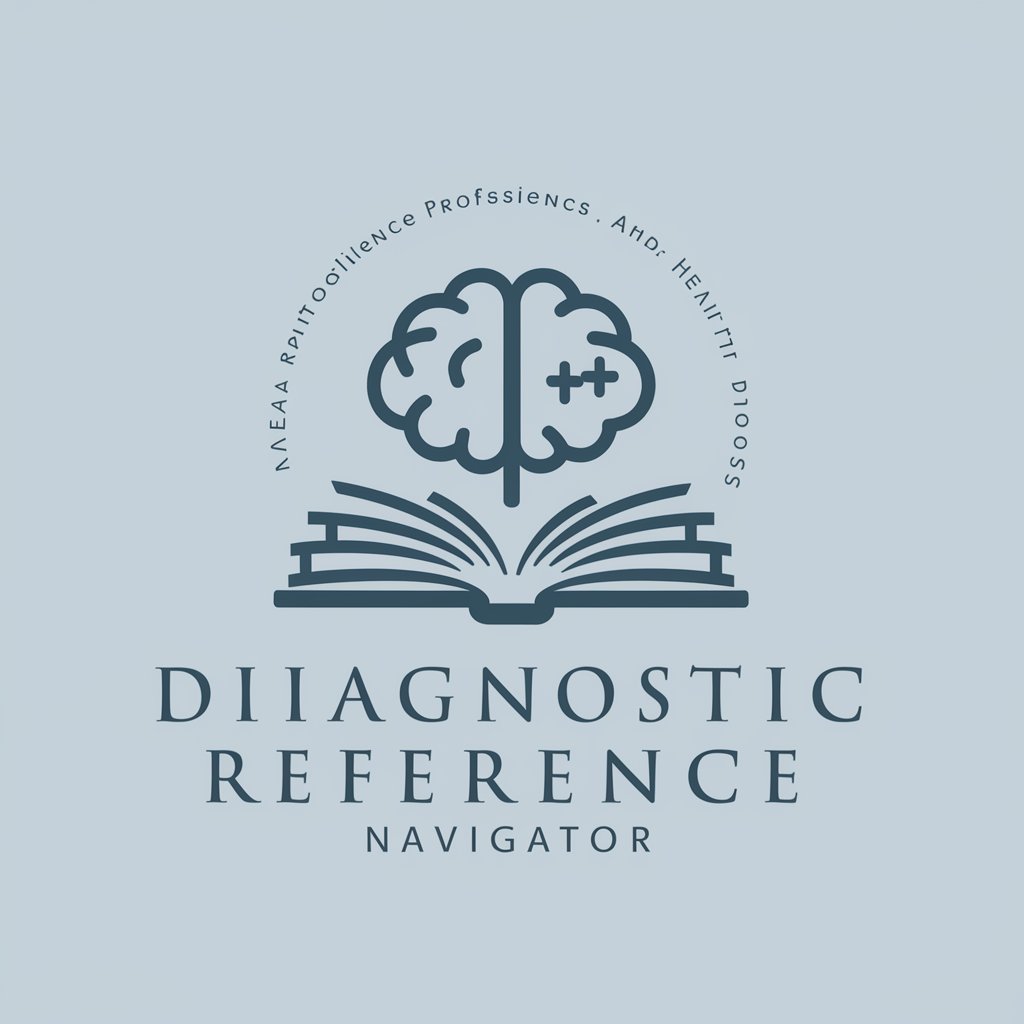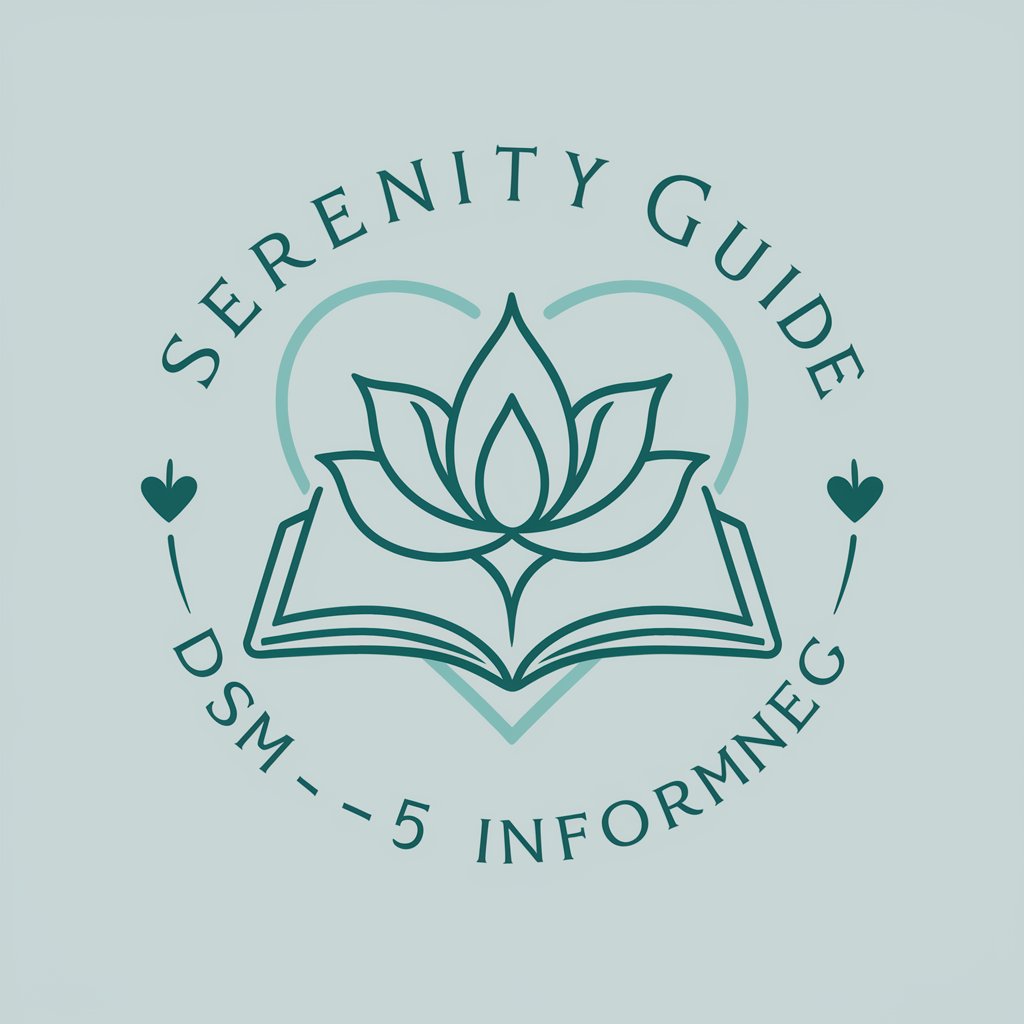
DSM-5 Diagnostic Helper - DSM-5 Criteria Analysis
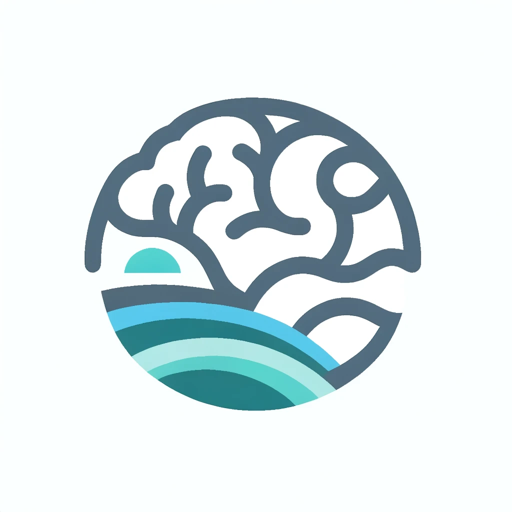
Welcome to the DSM-5 Diagnostic Inquiry Assistant.
Empowering Mental Health Diagnosis with AI
Can you provide detailed criteria for diagnosing major depressive disorder according to DSM-5?
What are the symptom requirements for a diagnosis of generalized anxiety disorder?
How does DSM-5 classify and diagnose bipolar I disorder?
What are the key diagnostic features of schizophrenia spectrum and other psychotic disorders in DSM-5?
Get Embed Code
Overview of DSM-5 Diagnostic Helper
The DSM-5 Diagnostic Helper is designed as a sophisticated tool aimed at aiding in the identification and understanding of mental health conditions using the Diagnostic and Statistical Manual of Mental Disorders, Fifth Edition (DSM-5) criteria. It serves as an auxiliary resource for professionals and individuals seeking to navigate the complex landscape of mental health diagnoses. Through a methodical analysis of symptoms against the DSM-5's diagnostic criteria, the tool helps in formulating differential diagnoses. For instance, if a user presents symptoms such as prolonged sadness, loss of interest in activities, and significant weight change, the DSM-5 Diagnostic Helper would inquire about the duration, severity, and impact of these symptoms to assess if they align with the criteria for Major Depressive Disorder as outlined in DSM-5. Powered by ChatGPT-4o。

Core Functions of DSM-5 Diagnostic Helper
Symptom Analysis Against DSM-5 Criteria
Example
Assessing symptoms presented by a user, such as anxiety, to determine if they meet the specific criteria for Generalized Anxiety Disorder.
Scenario
A user describes experiencing uncontrollable worry about various aspects of daily life for over six months. The DSM-5 Diagnostic Helper would guide the user through a series of targeted questions regarding the intensity, frequency, and impact of these worries to clarify if they fulfill the DSM-5 criteria for Generalized Anxiety Disorder.
Formulation of Differential Diagnoses
Example
Identifying and distinguishing between conditions with similar symptoms, such as Bipolar Disorder and Major Depressive Disorder.
Scenario
When a user shares experiences of mood swings ranging from depressive episodes to periods of high energy and reduced need for sleep, the tool would utilize DSM-5 criteria to differentiate between potential diagnoses of Bipolar Disorder and Major Depressive Disorder, focusing on the presence, duration, and severity of manic or hypomanic episodes.
Professional Development and Education
Example
Enhancing the knowledge base of healthcare professionals regarding the DSM-5 diagnostic criteria and updates.
Scenario
A clinician uses the DSM-5 Diagnostic Helper as a reference to stay informed about the latest diagnostic criteria and classifications introduced in the DSM-5-TR, ensuring accurate diagnosis and treatment planning.
Target User Groups for DSM-5 Diagnostic Helper
Healthcare Professionals
Psychiatrists, psychologists, social workers, and other mental health practitioners who require a quick, reliable reference to DSM-5 criteria in clinical settings. The tool aids in the accurate diagnosis of mental health conditions, supporting professionals in making informed decisions about treatment and care.
Students and Educators
Individuals studying psychology, psychiatry, or social work, as well as educators in these fields. The DSM-5 Diagnostic Helper serves as an educational resource, facilitating the learning and teaching of diagnostic criteria and the nuances of different mental health conditions.
Individuals Seeking Self-Understanding
People looking to understand their own or a loved one's symptoms in the context of mental health conditions. While not a substitute for professional diagnosis, the DSM-5 Diagnostic Helper can offer insights and guide users towards seeking professional evaluation and support.

How to Use DSM-5 Diagnostic Helper
Begin your journey
Start by accessing a platform offering the DSM-5 Diagnostic Helper, such as yeschat.ai, which provides a free trial without the need for login or a ChatGPT Plus subscription.
Familiarize with DSM-5 criteria
Review the DSM-5 criteria relevant to your query. Understanding these criteria will enhance your interaction with the Diagnostic Helper.
Prepare your query
Compile a detailed description of symptoms, behaviors, or scenarios you wish to analyze. Precision in your query will lead to more accurate guidance.
Engage with the tool
Input your query into the DSM-5 Diagnostic Helper. Utilize any prompts or questions the tool offers to refine your search for a more accurate diagnosis.
Review and research
Examine the diagnostic suggestions provided by the tool. Use these as a starting point for further research or discussion with a mental health professional.
Try other advanced and practical GPTs
Polar Character Crafter
Craft Dynamic Characters with AI

気持ちを形に GPT
Visualizing Emotions through AI Art

Lore Weaver
Weave Magic into Every Conversation

Grumpy
Challenge ideas with AI

SEO Link Building GPT (by Julian Goldie)
Elevate Your SEO with AI-Powered Link Building

Academic Negotiator
Strategize, Negotiate, Succeed with AI

Packing List Assistant
AI-powered, personalized travel packing.

Affirmation Assistant
Empowering your journey with AI-driven affirmations
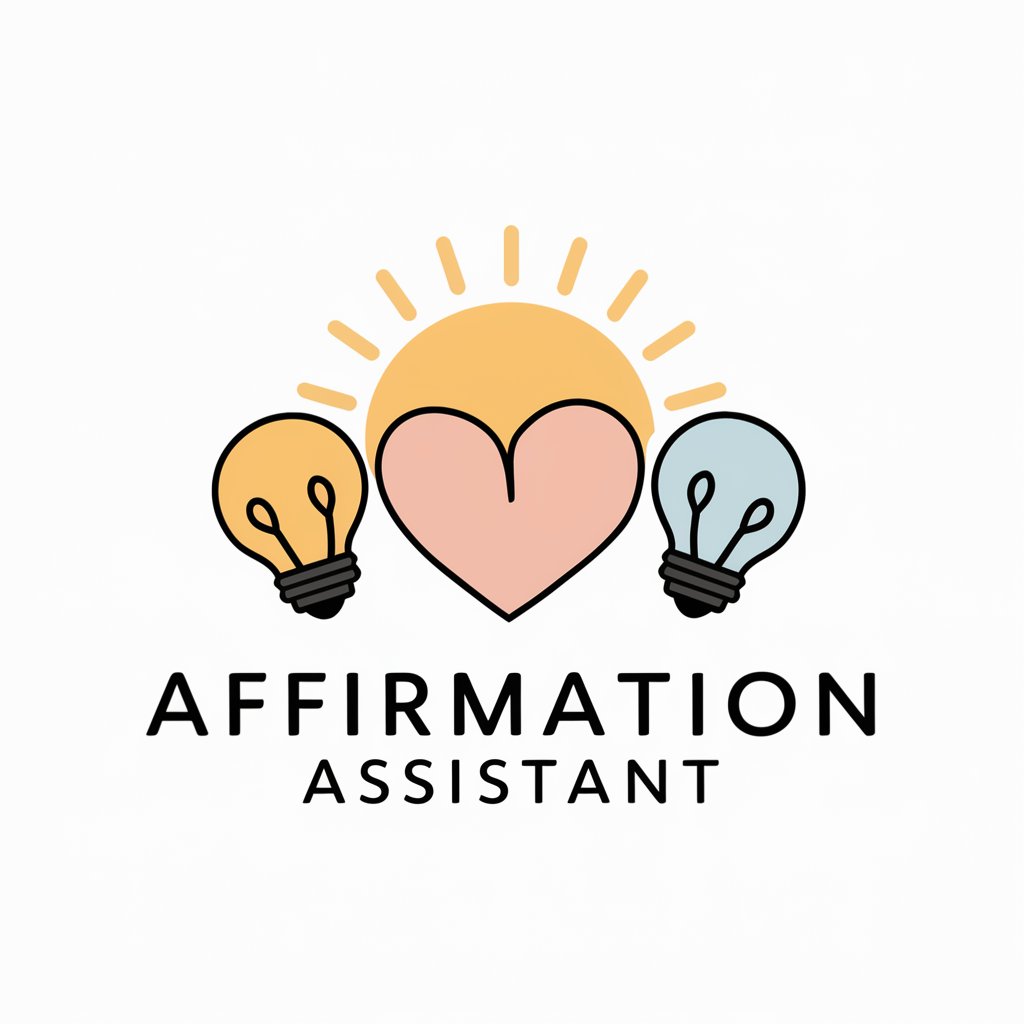
Who Would Win
AI-powered battle outcome predictions.

Market Mingle
AI-powered Market Intelligence, Daily.

AR 25-50, Preparing and Managing Correspondence
Streamlining Army Communications
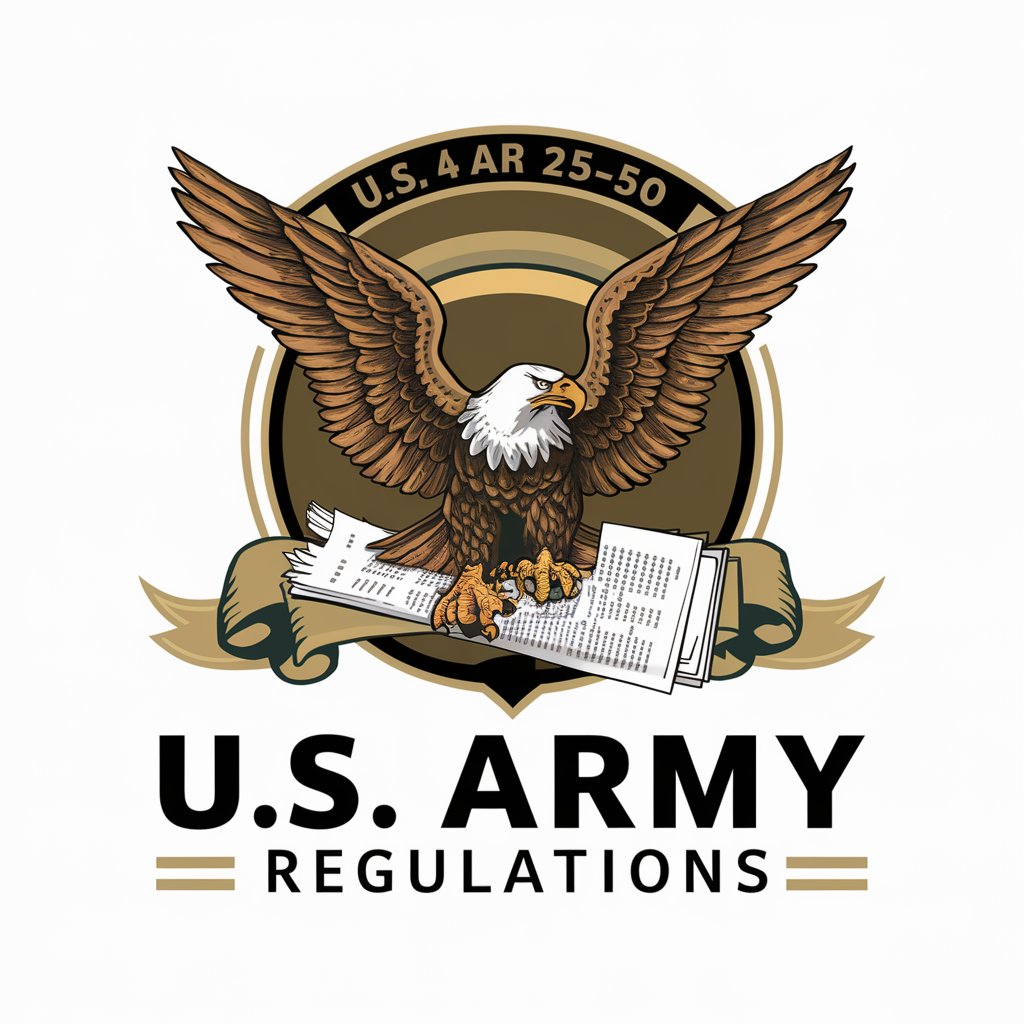
10x Spec Engineer
Empowering your code with AI-driven guidance.
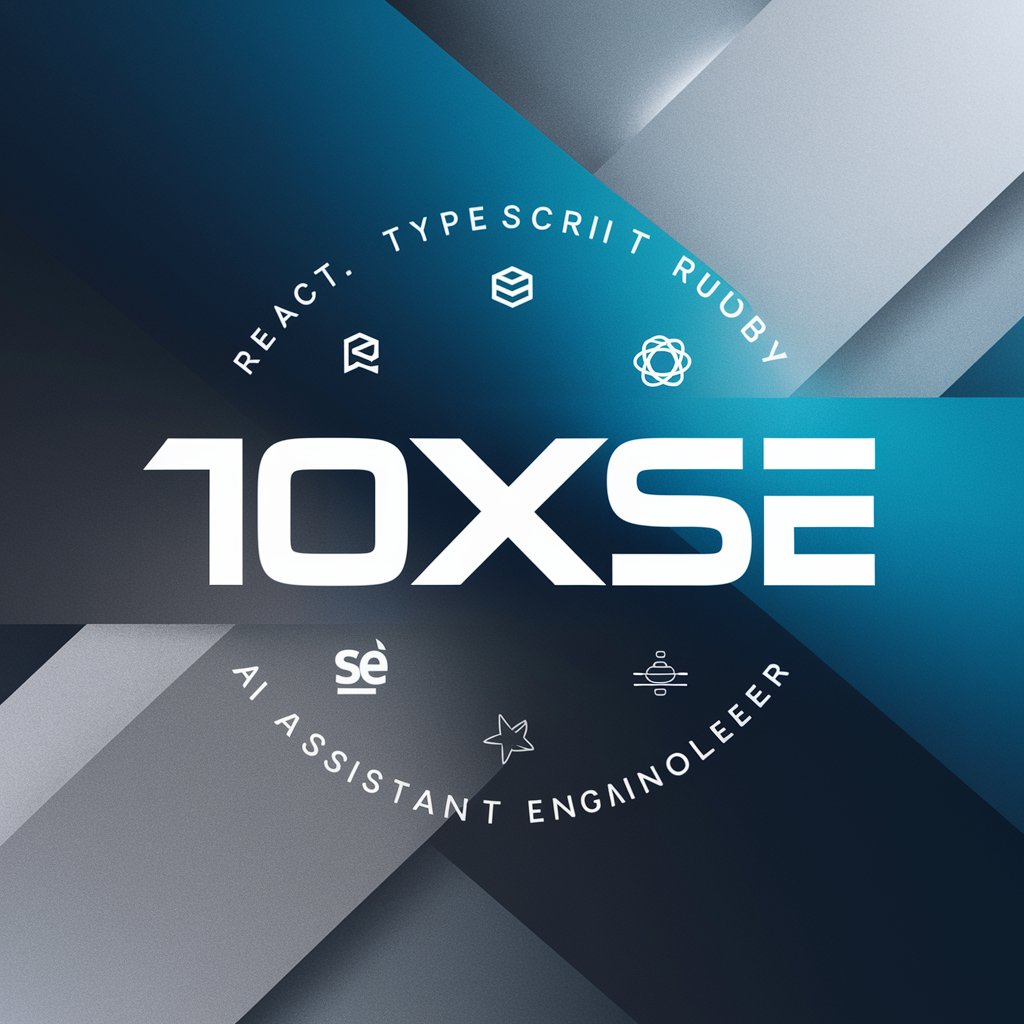
DSM-5 Diagnostic Helper Q&A
What is the DSM-5 Diagnostic Helper?
The DSM-5 Diagnostic Helper is a tool designed to assist in identifying mental health conditions using DSM-5 criteria, providing a methodical analysis against these criteria to formulate potential diagnoses.
Who can benefit from using the DSM-5 Diagnostic Helper?
This tool is beneficial for healthcare professionals, educators, students, and individuals seeking to understand mental health conditions better, providing a structured approach to diagnosis based on DSM-5 criteria.
Can the DSM-5 Diagnostic Helper provide a definitive diagnosis?
No, the tool is designed to assist in the diagnostic process by providing potential diagnoses based on input symptoms. A definitive diagnosis should always be confirmed by a qualified mental health professional.
How accurate is the DSM-5 Diagnostic Helper?
Accuracy depends on the detail and accuracy of the information provided. The tool is based on DSM-5 criteria and can offer valuable insights but is not a substitute for professional diagnosis.
Is the DSM-5 Diagnostic Helper up to date with the latest DSM-5-TR criteria?
Yes, the tool incorporates the most current DSM-5-TR criteria, ensuring that users have access to the latest diagnostic standards and updates in the field of mental health.
